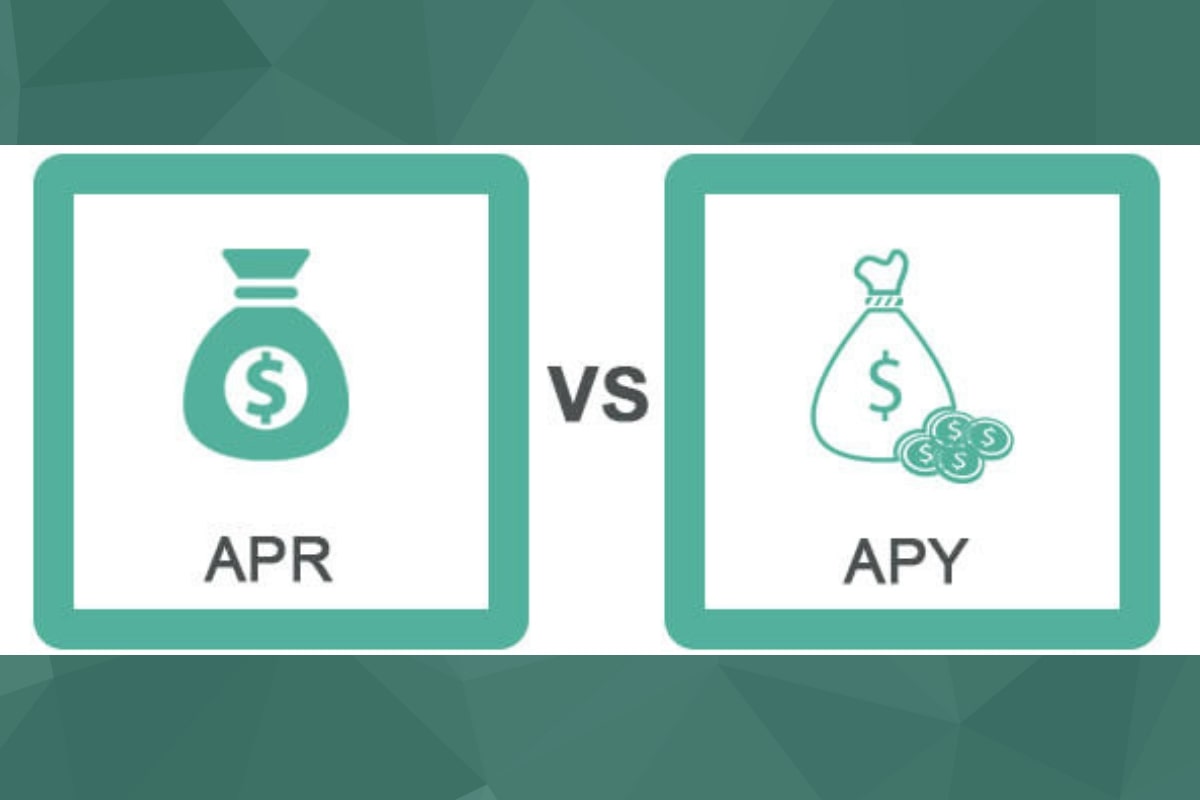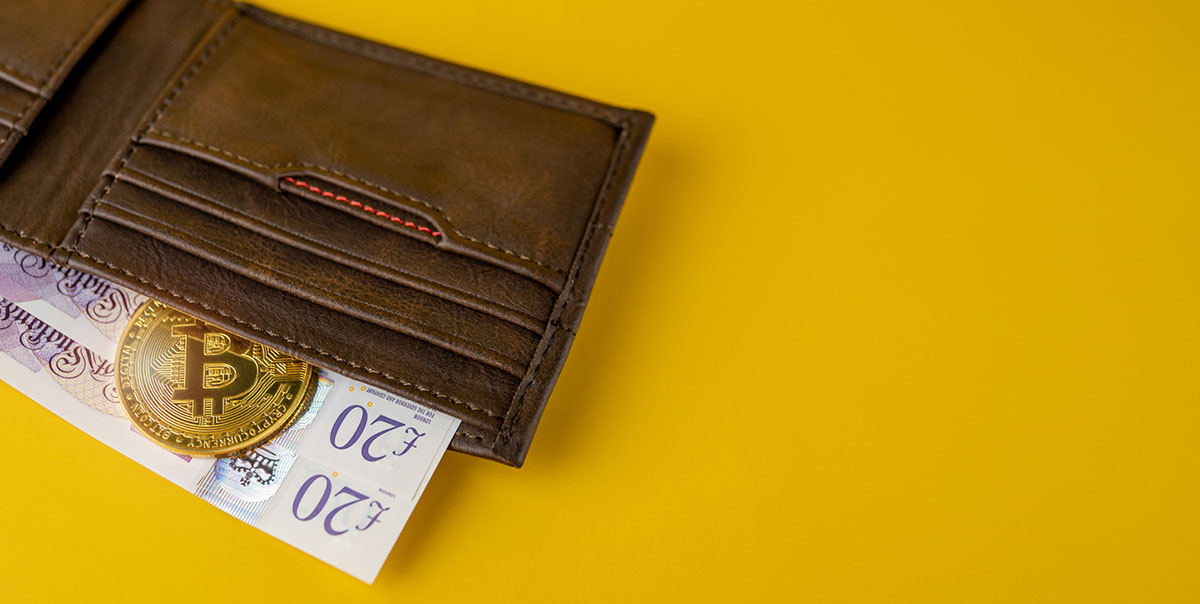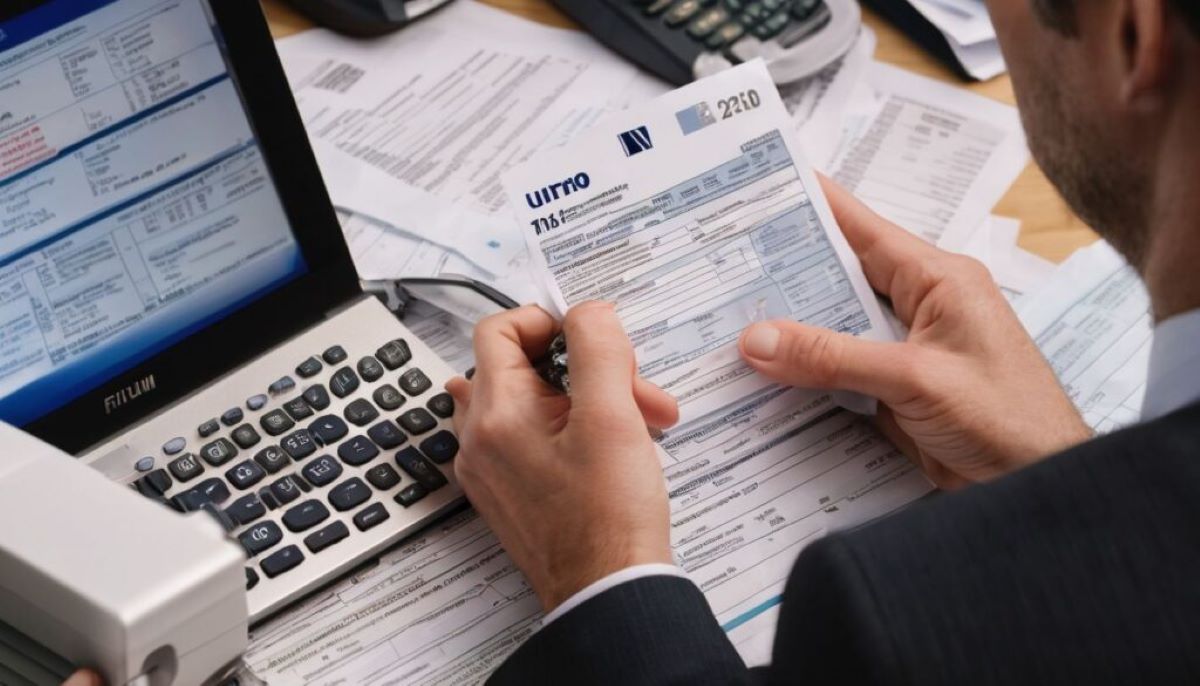

Finance
How To Buy Cryptocurrency Crypto Premier Guide
Published: October 5, 2023
Learn how to buy cryptocurrency with our comprehensive finance guide. Become a crypto expert and start investing in the booming digital currency market today.
(Many of the links in this article redirect to a specific reviewed product. Your purchase of these products through affiliate links helps to generate commission for LiveWell, at no extra cost. Learn more)
Table of Contents
- Introduction
- Understanding Cryptocurrency
- Types of Cryptocurrency
- Factors to Consider Before Buying Cryptocurrency
- Choosing a Cryptocurrency Exchange
- Account Setup and Verification
- Funding Your Account
- Placing a Buy Order
- Storing Your Cryptocurrency
- Tips for Buying Cryptocurrency
- Risks and Security Considerations
- Conclusion
Introduction
Welcome to the premier guide on how to buy cryptocurrency! In today’s digital age, the world of finance is constantly evolving, and cryptocurrencies have emerged as a popular and exciting asset class. Whether you’re a seasoned investor or a complete beginner, this comprehensive guide will walk you through the process of buying cryptocurrency and equip you with the knowledge you need to navigate this rapidly growing market.
Cryptocurrency, such as Bitcoin, Ethereum, and Litecoin, is a form of digital or virtual currency that uses cryptography for security. Unlike traditional centralized currencies issued by governments, cryptocurrency operates on a decentralized network called blockchain. The blockchain technology enables secure and transparent transactions without the need for intermediaries like banks.
Before venturing into the world of cryptocurrency, it’s important to understand the risks and rewards associated with this investment. The cryptocurrency market is known for its volatility, which means prices can fluctuate rapidly. It’s essential to approach investing in cryptocurrency with a long-term perspective and a willingness to weather market fluctuations.
In this guide, we will explore different types of cryptocurrencies, the factors you should consider before buying, how to choose a cryptocurrency exchange, the process of setting up an account and funding it, placing a buy order, and storing your cryptocurrency securely. We’ll also provide some valuable tips to help you navigate the crypto market more effectively.
Whether you’re considering buying cryptocurrency as an investment, as a means of conducting transactions, or simply out of curiosity, this guide will serve as your roadmap to successfully enter the world of digital currencies. So, let’s dive in and discover the exciting world of cryptocurrency together!
Understanding Cryptocurrency
Before diving into the process of buying cryptocurrency, it’s crucial to have a solid understanding of what cryptocurrency is and how it works. Cryptocurrency is a type of digital or virtual currency that uses cryptography for secure financial transactions, control the creation of new units, and verify the transfer of assets. It operates on a technology called blockchain, which is a decentralized and public ledger that records all transactions.
One of the key features of cryptocurrencies is decentralization. Unlike traditional currencies that are issued and regulated by central banks or governments, cryptocurrencies are not controlled by any single entity. Instead, they rely on advanced cryptographic techniques to ensure security, integrity, and transparency.
Another fundamental aspect of cryptocurrency is the concept of mining. Mining involves solving complex mathematical problems to validate and record transactions on the blockchain. Miners are rewarded with new coins for their efforts, which helps to distribute and maintain the currency’s supply.
Each cryptocurrency operates on its own set of rules and protocols. Bitcoin, the world’s first cryptocurrency, was created by an anonymous individual or group known as Satoshi Nakamoto in 2009. Since then, thousands of other cryptocurrencies, often referred to as altcoins, have been developed, each with its unique features and use cases.
Cryptocurrencies offer several advantages over traditional financial systems. Firstly, they provide a faster and more efficient way to transfer funds globally, with transactions typically settling in minutes or even seconds compared to days in traditional banking systems. Secondly, cryptocurrencies remove the need for intermediaries, such as banks or payment processors, allowing for peer-to-peer transactions without additional fees or restrictions.
However, it’s worth noting that cryptocurrencies also come with their own set of challenges and risks. The cryptocurrency market is highly volatile, meaning prices can experience significant fluctuations in short periods. This volatility can offer opportunities for substantial gains but can also result in substantial losses.
Additionally, cryptocurrencies have been subject to regulatory scrutiny and are a target for cyberattacks. It’s important to educate yourself about the risks involved and take appropriate security measures to protect your cryptocurrency investments.
Now that you have a basic understanding of what cryptocurrency is and how it functions, let’s explore the different types of cryptocurrencies available in the market.
Types of Cryptocurrency
The world of cryptocurrency is a diverse and ever-expanding landscape. With thousands of different cryptocurrencies available, it’s essential to understand the various types and their unique characteristics. While Bitcoin remains the most well-known cryptocurrency, there are several other prominent cryptocurrencies, often referred to as altcoins, that offer different features and use cases.
1. Bitcoin (BTC): As the pioneering cryptocurrency, Bitcoin holds a special place in the digital currency arena. It was created to be a decentralized and peer-to-peer electronic cash system. Bitcoin has gained widespread acceptance and is often seen as a store of value or a digital gold due to its limited supply and long-standing reputation.
2. Ethereum (ETH): Ethereum is a decentralized platform that enables developers to build and deploy smart contracts and decentralized applications (DApps). The native cryptocurrency of the Ethereum network is called Ether. Ethereum’s programmable blockchain has paved the way for a wide range of innovative projects and token offerings.
3. Ripple (XRP): Ripple is both a digital payment protocol and a cryptocurrency. Ripple’s main focus is on facilitating fast, low-cost international money transfers. It aims to provide a bridge between cryptocurrencies and traditional financial systems, making it an attractive option for banks and financial institutions.
4. Litecoin (LTC): Often considered the silver to Bitcoin’s gold, Litecoin was created as a faster and more lightweight alternative to Bitcoin. It has a faster block generation time and employs a different hashing algorithm. Many merchants accept Litecoin as a means of payment, and it has gained a dedicated following.
5. Bitcoin Cash (BCH): Bitcoin Cash is a cryptocurrency that emerged as a result of a hard fork from Bitcoin. It aimed to increase the block size to enable faster transactions and lower fees. Bitcoin Cash differentiates itself from Bitcoin by focusing on peer-to-peer electronic cash rather than a store of value.
These are just a few examples of the many cryptocurrencies available in the market. Other notable cryptocurrencies include Cardano (ADA), Polkadot (DOT), Chainlink (LINK), and Stellar (XLM), among others, each offering unique features and use cases.
When considering investing in a particular cryptocurrency, it’s important to research and understand its technology, team, adoption, and potential for growth. The cryptocurrency market is constantly evolving, and new projects emerge regularly, so staying informed and updated is essential.
Now that you have an understanding of the different types of cryptocurrencies, let’s delve into the factors you should consider before buying cryptocurrency.
Factors to Consider Before Buying Cryptocurrency
Buying cryptocurrency can be an exciting and potentially rewarding investment, but it’s crucial to approach it with careful consideration. Before diving into the market, there are several crucial factors to evaluate and analyze. Understanding these factors will help you make informed decisions and mitigate potential risks.
1. Research and Due Diligence: Before investing in any cryptocurrency, it’s essential to conduct thorough research and due diligence. Understand the technology, team, and purpose behind the cryptocurrency. Analyze its whitepaper, roadmap, and community engagement. Look at the project’s potential for long-term viability and growth.
2. Market Analysis: Study the market trends and sentiment surrounding the cryptocurrency you’re interested in. Consider factors such as historical price performance, trading volume, market capitalization, and market dominance. Additionally, stay informed about industry news and regulatory developments that might impact the cryptocurrency market.
3. Risk Assessment: Cryptocurrencies are known for their volatility, so assess your risk tolerance before investing. Understand that prices can fluctuate rapidly, and you may experience significant gains or losses. It’s important to only invest what you can afford to lose and consider diversifying your portfolio to spread risk.
4. Long-Term Perspective: Cryptocurrency investments should be approached with a long-term perspective. While short-term gains are possible, the market’s volatility makes it challenging to predict short-term price movements accurately. Consider investing in cryptocurrencies that align with your long-term goals and have solid fundamentals.
5. Regulatory Environment: Stay informed about the regulatory environment surrounding cryptocurrencies. Governments and regulatory bodies worldwide are still developing their frameworks, and regulations can have a significant impact on the market. Assess the stance of the jurisdiction in which you reside and the potential implications on your investment.
6. Security Measures: Cryptocurrency investments require robust security measures to protect your assets. Ensure you understand how to safeguard your digital wallets and private keys. Consider using hardware wallets or cold storage options for enhanced security. Implement strong passwords and enable two-factor authentication on your accounts.
7. Liquidity and Trading Volume: Liquidity is crucial when buying or selling cryptocurrencies. Higher liquidity and trading volume decrease the risk of slippage and ensure that you can easily execute your trades. Evaluate the liquidity of the cryptocurrency you’re interested in and consider trading on reputable and well-established exchanges.
8. Community and Adoption: The strength of a cryptocurrency’s community and its adoption are important indicators of its potential for growth and success. Evaluate the level of community engagement, developer activity, partnerships, and adoption by businesses and institutions. A strong and active community can contribute to the long-term success of a cryptocurrency.
Consider these factors before making a decision to invest in a particular cryptocurrency. Remember, it’s essential to perform your own research and consult with financial professionals if needed. With a well-informed approach, you can navigate the cryptocurrency market more effectively and increase your chances of making successful investments.
Next, we’ll explore how to choose a cryptocurrency exchange, an essential step in the process of buying cryptocurrency.
Choosing a Cryptocurrency Exchange
Choosing the right cryptocurrency exchange is a critical step in your journey to buy and trade cryptocurrencies. With numerous exchanges available, it’s important to consider several factors to ensure a safe and secure trading experience. Here are some key factors to consider when selecting a cryptocurrency exchange:
1. Security Measures: Security should be your top priority when choosing an exchange. Look for exchanges that offer two-factor authentication (2FA) and encryption to protect your account and personal information. Research the exchange’s track record of security incidents and their approach to handling and safeguarding customer funds.
2. Exchange Reputation: Look for well-established and reputable exchanges in the cryptocurrency community. Read reviews, check online forums, and consider the exchange’s history and track record. Ensure that the exchange has a good reputation for reliability, customer support, and transparency.
3. Supported Cryptocurrencies: Check the range of cryptocurrencies supported by the exchange. If you have a specific cryptocurrency in mind, ensure that it is listed on the exchange. Moreover, assess the liquidity of the cryptocurrencies you intend to trade to ensure that you can easily buy and sell at fair market prices.
4. User Interface and Experience: Consider the user interface and experience offered by the exchange. Look for exchanges with an intuitive and user-friendly interface that makes trading easy and accessible. The trading platform should provide relevant information, charts, and tools to analyze the market and execute trades effectively.
5. Fees and Trading Costs: Assess the fee structure of the exchange. Exchanges typically charge fees for transactions, deposits, and withdrawals. Compare the fee schedules of different exchanges and consider the impact on your trading strategy. Additionally, be aware of any hidden fees or charges beyond the advertised rates.
6. Payment Methods: Check the available payment methods for depositing and withdrawing funds. Ensure that the exchange supports the payment methods you prefer, whether it’s bank transfers, credit/debit cards, or other payment options. Consider the fees, processing times, and limitations associated with each payment method.
7. Regulatory Compliance: Verify that the exchange complies with regulatory requirements in the jurisdictions it operates. Look for exchanges that have obtained necessary licenses or registrations. This provides a level of assurance that the exchange follows best practices and adheres to legal and regulatory standards.
8. Customer Support: Consider the level and quality of customer support provided by the exchange. A responsive and helpful customer support team can address your concerns and resolve issues more efficiently. Check if the exchange offers support through various channels, such as live chat, email, or phone, and assess their response times.
Consider these factors when selecting a cryptocurrency exchange. It’s important to find an exchange that aligns with your specific needs and preferences. Take your time to research and compare different exchanges before making a decision. Once you’ve chosen an exchange, the next step is to create an account and complete the verification process.
In the next section, we’ll walk you through the process of setting up an account and verifying your identity on a cryptocurrency exchange.
Account Setup and Verification
Setting up an account and completing the verification process is a crucial step when using a cryptocurrency exchange. This process is necessary to ensure compliance with regulatory requirements and to enhance the security of your account. Here’s a general overview of the steps involved:
1. Registration: Start by visiting the website of your chosen cryptocurrency exchange. Look for the “Register” or “Sign Up” button to initiate the registration process. Fill in the required details, such as your name, email address, and password. Make sure to create a strong, unique password to protect your account.
2. Email Verification: After completing the registration form, you will typically receive a verification email. Click on the verification link provided in the email to confirm your email address. This step is necessary to ensure the validity of your account.
3. Account Verification: Next, you will need to complete the account verification process. This typically involves providing additional personal information and documents for identity verification purposes. The required documents might include a copy of your government-issued ID, proof of address, and a selfie or photo for facial verification.
4. KYC/AML Compliance: Know Your Customer (KYC) and Anti-Money Laundering (AML) regulations are in place to prevent illegal activities such as money laundering and fraud. Cryptocurrency exchanges are required to comply with these regulations, which involve verifying the identities of their users. Submit the necessary documents and information requested by the exchange to fulfill their KYC/AML requirements.
5. Verification Process Timeframe: The verification process can vary in duration, depending on the exchange’s policies and the volume of applications they receive. Some exchanges may have an automated verification process that can be completed within minutes, while others may require manual review, which can take a few days or even weeks. Patience is key during this step.
6. Additional Security Measures: In addition to completing the verification process, consider implementing additional security measures to protect your account. Enable two-factor authentication (2FA) using an authenticator app or SMS verification. This adds an extra layer of security by requiring a verification code in addition to your password when logging in.
Once your account has been successfully verified, you will gain access to the full functionality of the cryptocurrency exchange. You can then proceed to deposit funds into your account and start buying cryptocurrencies.
It’s important to note that different exchanges may have specific requirements and procedures for account setup and verification. Make sure to carefully review the instructions provided by the exchange and follow their guidelines to ensure a smooth process.
Now that you have a verified account, the next step is to fund your account so that you can start buying cryptocurrencies. In the next section, we’ll explore the different methods for funding your cryptocurrency exchange account.
Funding Your Account
Once you have set up and verified your cryptocurrency exchange account, the next step is to fund it. Funding your account enables you to have the necessary funds to buy or trade cryptocurrencies. Here are the common methods for funding your cryptocurrency exchange account:
1. Bank Transfers: Many cryptocurrency exchanges accept bank transfers as a funding method. This involves linking your bank account to the exchange and initiating a transfer of funds. Depending on your location and the exchange, the transfer may be done via wire transfer or Automated Clearing House (ACH) transfer. Bank transfers are a popular option for funding larger amounts, but they may take several days for the funds to be credited to your account.
2. Credit/Debit Cards: Some cryptocurrency exchanges support funding via credit or debit cards. You can securely link your card to your exchange account and make direct payments. This method provides a quick and convenient way to fund your account; however, some exchanges may charge additional fees for card transactions.
3. Cryptocurrency Deposits: If you already own other cryptocurrencies, you can transfer them from your personal wallet to your exchange account. The exchange will provide you with a unique deposit address for each cryptocurrency. You simply need to initiate a transfer from your wallet to the provided address. This method allows you to start trading immediately with the deposited cryptocurrency.
4. Peer-to-Peer Payments: In some cases, you may find exchanges that allow peer-to-peer transactions, where you can directly purchase cryptocurrencies from other users on the platform. This method provides more flexibility and allows for different payment options, such as PayPal or Venmo. Peer-to-peer payments can be convenient, but make sure to exercise caution and verify the legitimacy of the seller before proceeding.
When funding your account, it’s important to consider the fees associated with each funding method. Different exchanges may have varying fee structures, and some funding methods may incur higher fees than others. Additionally, be aware of any deposit limits imposed by the exchange.
Another essential consideration is the availability of the cryptocurrency you intend to buy. Ensure that the exchange supports the specific cryptocurrency you wish to purchase. Not all exchanges offer the same range of cryptocurrencies, so double-check before depositing funds.
Once the funds are credited to your exchange account, you’re ready to place a buy order and start acquiring the cryptocurrencies you desire. But before you do, keep in mind the importance of storing your cryptocurrencies securely.
In the next section, we’ll cover the key points to consider when storing your cryptocurrencies and the options available to ensure their safety.
Placing a Buy Order
Once you have funded your cryptocurrency exchange account, you can proceed to place a buy order. A buy order allows you to purchase the cryptocurrency of your choice at the current market price or a specified price. Here’s a step-by-step guide on how to place a buy order:
1. Choose the Cryptocurrency: Determine which cryptocurrency you want to buy. Select it from the available options on the exchange’s trading platform.
2. Select the Trading Pair: Determine the trading pair you wish to use. For example, if you want to buy Bitcoin with US Dollars, you would choose the BTC/USD trading pair. The selection of trading pairs depends on the available options on the exchange.
3. Set the Order Type: Choose the type of order you want to place. The most common order types are:
- Market Order: A market order is executed immediately at the current market price. This type of order ensures quick execution but does not guarantee a specific purchase price.
- Limit Order: A limit order allows you to set a specific price at which you want to buy the cryptocurrency. The order will be executed only when the market reaches or surpasses your specified price.
- Stop Order: A stop order is used to buy a cryptocurrency once it reaches a certain price level. It is commonly used as a tool to limit potential losses or to enter a trade once a specific price threshold is crossed.
4. Set the Quantity: Enter the amount or quantity of the cryptocurrency you want to buy. Ensure that you have enough funds in your account to cover the purchase.
5. Review and Confirm: Double-check your order details, including the cryptocurrency, trading pair, order type, and quantity. Take a moment to review the transaction fees associated with the order.
6. Place the Order: Once you are satisfied with the order details, click on the “Place Order” or similar button to submit your buy order. The exchange will then execute the order based on the selected order type and market conditions.
7. Monitor Your Order: After placing the buy order, keep an eye on the order status. You can track your order on the exchange’s trading platform, typically under the “Open Orders” or “Order History” section. The order will either be filled, partially filled, or remain open until the specified conditions are met.
It’s important to note that the process and layout of placing a buy order might vary slightly among different exchanges. Familiarize yourself with the specific trading platform and interface of the exchange you are using to ensure a seamless buying experience.
Once your buy order has been executed, the purchased cryptocurrency will appear in your exchange account. At this point, you have the option to either leave the cryptocurrency on the exchange or transfer it to a personal wallet for increased security. Remember to exercise caution and choose a secure storage method to protect your investment.
In the next section, we’ll explore the different options for storing your cryptocurrency securely.
Storing Your Cryptocurrency
After purchasing cryptocurrency, it’s crucial to store it safely to protect your investment from potential security risks. Cryptocurrencies are digital assets, and their secure storage involves understanding and implementing proper security measures. Here are some options for storing your cryptocurrency securely:
1. Software Wallets: Software wallets are applications that you install on your computer or mobile device. They provide a convenient way to store and manage your cryptocurrencies. Software wallets can be further categorized into:
- Hot Wallets: Hot wallets are connected to the internet, which makes them more susceptible to hacking attempts. While convenient for frequent transactions, they are generally considered less secure for long-term storage.
- Cold Wallets: Cold wallets, also known as offline wallets, are not connected to the internet. They offer a higher level of security as they are less vulnerable to hacking. Cold wallets include hardware wallets and paper wallets.
2. Hardware Wallets: Hardware wallets are physical devices designed specifically for storing cryptocurrencies. They work by generating and storing your private keys offline, providing an extra layer of security. Hardware wallets are considered one of the most secure options for long-term cryptocurrency storage.
3. Paper Wallets: A paper wallet involves printing your private keys or the QR code of your wallet onto a physical piece of paper. Paper wallets are entirely offline and can be stored in a secure location. However, it’s essential to take precautions to protect the physical copy from loss, damage, or unauthorized access.
4. Custodial Wallets: Some online exchanges and cryptocurrency services offer custodial wallets. These wallets are managed by a third-party provider on your behalf. While convenient, this option means that you are relying on the security practices and trustworthiness of the custodian. Be sure to research and choose a reputable and trusted service if you opt for a custodial wallet.
Regardless of the storage option you choose, it’s important to follow these best practices:
- Backup Your Wallet: Regularly create backups of your wallet and private keys. Store the backups in secure, separate locations to ensure you can recover your funds if your primary storage is compromised or lost.
- Enable Two-Factor Authentication (2FA): Enable 2FA on your wallets and accounts whenever possible. This adds an extra layer of security by requiring a verification code in addition to your password when accessing your wallet.
- Be Cautious of Phishing Attempts: Be vigilant for phishing attempts or fraudulent websites posing as legitimate wallets or exchanges. Always verify the authenticity of the website or application before entering your personal information or wallet credentials.
- Keep Software Updated: Regularly update the software of your wallets and devices. Software updates often include security patches that help protect against known vulnerabilities.
- Keep Private Keys Offline: Avoid storing your private keys digitally or in cloud storage. By keeping your private keys offline, you reduce the risk of them being accessed by hackers.
By implementing these security measures and selecting a storage option that aligns with your needs, you can enhance the security of your cryptocurrency holdings. Remember to stay informed about the latest security practices and adapt your storage strategy accordingly.
In the next section, we’ll share some valuable tips for buying and investing in cryptocurrency.
Tips for Buying Cryptocurrency
Buying cryptocurrency can be an exciting and potentially profitable endeavor, but it’s important to approach it with care and consideration. Here are some valuable tips to keep in mind when buying and investing in cryptocurrency:
1. Do Your Research: Thoroughly research and understand the cryptocurrency you are interested in before investing. Learn about its technology, team, use cases, and potential for growth. Consider reading the project’s whitepaper and staying updated with the latest news and developments.
2. Diversify Your Portfolio: Spread your risk by diversifying your cryptocurrency portfolio. Investing in multiple cryptocurrencies can help mitigate losses if one particular cryptocurrency underperforms. It’s important to find a balance between well-established cryptocurrencies and promising emerging ones.
3. Invest Only What You Can Afford to Lose: Due to the volatility of the cryptocurrency market, it’s crucial to invest only what you can afford to lose. Cryptocurrency prices can fluctuate dramatically, and it’s important to be prepared for potential losses.
4. Focus on Long-Term Performance: Cryptocurrency investments should be approached with a long-term perspective. Short-term price fluctuations are common, and it’s often challenging to predict short-term market movements accurately. Stay focused on the long-term potential of the cryptocurrency you invest in.
5. Stay Informed: Stay updated with the latest news, regulations, and market trends in the cryptocurrency industry. Being well-informed will help you make better investment decisions and adapt to changes in the market.
6. Use Reliable Exchanges: Choose reputable and trustworthy cryptocurrency exchanges. Look for exchanges with robust security measures, a user-friendly interface, and good customer support. Read reviews and gather feedback from other users to ensure a positive trading experience.
7. Be Mindful of Security: Implement strong security measures to protect your cryptocurrency holdings. Use secure wallets, enable two-factor authentication (2FA), and be cautious of phishing attempts. Make sure to keep your private keys offline and regularly back up your wallets.
8. Set Realistic Expectations: While the cryptocurrency market has the potential for significant gains, it’s essential to set realistic expectations. Avoid falling into the trap of making speculative investments solely based on hype or fear of missing out (FOMO).
9. Take Profit and Manage Risk: Consider setting profit targets and implementing risk management strategies. This could involve periodically taking profits from your investments or setting stop-loss orders to limit potential losses.
10. Seek Professional Advice: If you’re uncertain or new to the cryptocurrency market, consider seeking advice from financial professionals or experts in the field. They can provide guidance based on their experience and help you make informed investment decisions.
Remember, buying cryptocurrency involves both the potential for significant gains and inherent risks. By following these tips and staying informed, you can navigate the cryptocurrency market more effectively and increase your chances of making successful investments.
In the next section, we’ll discuss the risks and security considerations associated with investing in cryptocurrency.
Risks and Security Considerations
Investing in cryptocurrency comes with various risks and security considerations that every investor should be aware of. Understanding and addressing these risks are paramount to safeguarding your investments. Here are some key risks and security considerations:
1. Market Volatility: The cryptocurrency market is known for its high volatility. Prices can fluctuate rapidly, sometimes by significant amounts, within short periods. It’s important to be prepared for potential price swings and to make investment decisions based on thorough research and a long-term perspective.
2. Regulatory and Legal Risks: Cryptocurrencies operate in a constantly evolving regulatory landscape. Changes in laws or regulations can have a significant impact on the market and the value of cryptocurrencies. Stay informed about the regulatory environment in your jurisdiction and consider the potential risks associated with regulatory changes.
3. Security Breaches: Cryptocurrency exchanges and wallets are vulnerable to security breaches and hacking attempts. It’s crucial to choose exchanges and wallets with robust security measures, such as encryption and two-factor authentication (2FA). Additionally, keep your private keys secure and regularly backup your wallets.
4. Lack of Regulation: Cryptocurrencies operate in a decentralized and largely unregulated environment. While this offers certain advantages, it also means that there is a lack of investor protection and recourse in case of fraudulent activities or disputes. Exercise caution and conduct due diligence when participating in the cryptocurrency market.
5. Phishing and Scams: Cryptocurrency-related phishing attempts and scams are prevalent. Be cautious of unsolicited emails, links, or social media messages requesting your personal information or private keys. Always verify the authenticity of websites and platforms before entering any sensitive information.
6. Technology Risks: Cryptocurrencies rely on complex technology such as blockchain. There is a risk of technical vulnerabilities, hacking attacks, or software bugs that could compromise the functionality and security of cryptocurrencies. Stay informed and updated about any potential vulnerabilities or updates related to the cryptocurrency you invest in.
7. Lack of Liquidity: Some less popular cryptocurrencies may suffer from low liquidity, making it difficult to buy or sell them quickly and at fair prices. Be mindful of the liquidity and trading volume of the cryptocurrencies you invest in to ensure that you can easily execute your trades.
8. Emotional Decision-Making: The volatile nature of the cryptocurrency market can evoke strong emotions, such as fear and greed. Emotional decision-making can lead to impulsive or irrational investment decisions. It’s important to remain calm, stick to your investment strategy, and avoid making decisions based on short-term market fluctuations.
9. Loss of Private Keys: If you lose access to your private keys or wallet credentials, you may permanently lose access to your cryptocurrencies. Take necessary precautions such as storing backups of your private keys in secure locations and using reputable wallet providers to minimize the risk of losing your assets.
Awareness of these risks and implementation of proper security measures are crucial for protecting your cryptocurrency investments. Stay informed, use reputable platforms, be cautious of potential threats, and make well-informed decisions based on your risk tolerance and investment goals.
Now that we’ve covered the risks and security considerations, let’s conclude our comprehensive guide to buying cryptocurrency.
Conclusion
Congratulations, you have reached the end of our comprehensive guide on buying cryptocurrency. We have covered a wide range of topics, including understanding cryptocurrency, types of cryptocurrencies, factors to consider before buying, choosing a cryptocurrency exchange, account setup and verification, funding your account, placing a buy order, storing your cryptocurrency securely, tips for buying, and risks and security considerations.
By now, you should have a solid understanding of how to navigate the world of cryptocurrency. Remember, investing in cryptocurrencies involves both potential rewards and inherent risks. It’s crucial to approach it with careful consideration, conduct thorough research, and make well-informed decisions.
Always prioritize security by choosing reputable exchanges, implementing strong security measures, and storing your cryptocurrencies in secure wallets. Stay informed about market trends, regulation, and the latest developments in the cryptocurrency industry. Diversify your portfolio, set realistic expectations, and be mindful of the risks associated with volatility and market fluctuations.
If you’re new to cryptocurrency, consider starting with small investments and gradually expanding your holdings as you gain more experience and confidence. Seek advice from financial professionals or experts in the field if needed, and remember that patience and a long-term perspective are key to success in the cryptocurrency market.
As technology continues to advance and the adoption of cryptocurrencies grows, the world of finance is being reshaped. With the proper knowledge and understanding, you are well-equipped to participate in and potentially benefit from this exciting digital revolution.
Now it’s time to take what you’ve learned and embark on your cryptocurrency journey. Good luck and happy investing!














